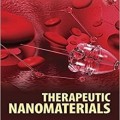دانلود کتاب نانو تکنولوژی ویروسی
Viral Nanotechnology, 1ed
Viral Nanotechnology presents an up-to-date overview of the rapidly developing field of viral nanotechnology in the areas of immunology, virology, microbiology, chemistry, physics, and mathematical modeling. Its chapters are by leading researchers and practitioners, making it both a comprehensive and indispensable resource for study and research.
The field of viral nanotechnology is new and quickly expanding due to increasing demand of the applications already developed. The editors identify viral nanotechnology as a significant science that concerns itself with how to use the molecular modules that the distinctly different science of molecular engineering only constructs. The current potential applications of viral technology are manifold, with opportunities to revolutionize practices in photonics, catalysis, electronics, energy, biomedicine, health care, and public health.
This book emphasizes using viral nanotechnology to improve health. A special emphasis is placed upon using viral nanotechnology for developing vaccines. In addition, it documents viral nanotechnology’s use as a powerful tool for developing drugs and genetic therapies. There is also great potential in its use as a means for diagnostics, including the development of diagnostic reagents and novel imaging technologies for detecting disease and infectious agents.
Viral nanotechnology’s rapid and exciting growth is due to the need for new tools in the prevention, diagnosis, and treatment of disease. The contributors to this volume approach each chapter with the hope that their research and practices will contribute to an improvement in health and life on an unprecedented scale in human history.
About the Author
Yury Khudyakov, PhD, received his MS in genetics from Novosibirsk State University and his PhD in molecular biology from the D.I. Ivanovsky Institute of Virology, Academy of Medical Sciences in Russia. He is chief of the Molecular Epidemiology and Bioinformatics Laboratory, Division of Viral Hepatitis, Centers for Disease Control and Prevention, Atlanta, Georgia. He has published more than 170 research papers and book chapters, is an author of several issued and pending patents, and is a member of the editorial board for the Journal of Clinical Virology and academic editor for PlosOne.
Paul Pumpens graduated from the Chemical Department of the University of Latvia in 1970, received his PhD in molecular biology from the Latvian Academy of Sciences in Riga, and received his DSc from the Institute of Molecular Biology of the USSR Academy of Sciences in Moscow. He pioneered genetic engineering research in Latvia and was one of the first in the world to successfully clone the hepatitis B virus genome. He is an author of more than 300 scientific papers and issued or pending patents.
Contents
Chapter 1: Introduction to Capsid Architecture
Chapter 2: Self-Assembling Virus-Like and Virus-Unlike Particles
Chapter 3: Electron Cryomicroscopy and Image Reconstruction of Viral Nanoparticles
Chapter 4: X-Ray Analysis of Viral Nanoparticles
Chapter 5: Computational Methods for Engineering Protein 3D Nano-Objects
Chapter 6: Viral Nanopartides: Principles of Construction and Characterization
Chapter 7: Immunology of Virus-Like Particles
Chapter 8: Nanomedicine : General Considerations and Examples
Chapter 9: Virus-Like Particles : A Versatile Tool for Basic and Applied Research on Emerging and Reemerging Viruses
Chapter 10: Virus-Like Particles Derived from Hepatitis Viruses
Chapter 11: History and Potential of Hepatitis B Virus Core as a VLP Vaccine Platform
Chapter 12: SplitCore : Advanced Nanoparticulate Molecular Presentation Platform Based on the Hepatitis B Virus Capsid
Chapter 13: Use of VLPs in the Design of Malaria Vaccines
Chapter 14: Use of HBcAg as an Adjuvant in DNA-Based Vaccines : An Unexpected Journey
Chapter 15: Bacteriophage Virus-Like Particles as a Platform for Vaccine Discovery
Chapter 16: Production of Virus-Like Particles in Plants
Chapter 17: Bionanomaterials from Plant Viruses
Chapter 18: Assembly of a Bluetongue Virus-Like Particle : Multiprotein Complex and Its Use as Vaccine
Chapter 19: Virus-Like Particles Based on Polyomaviruses and Human Papillomaviruses as Vectors for Vaccines, Preventive and Therapeutic Immunotherapy, and Gene Delivery
Chapter 20: Applications of Viral Nanopartides Based on Polyomavirus and Papillomavirus Structures
Chapter 21: Nanopartides of Norovirus
Chapter 22: Virus-Like Particle Enzyme Encapsulation: Confined Catalysis and Metabolic Materials
Chapter 23: Principles of Design of Virus Nanopartides for Imaging Applications
Chapter 24: Enveloped Viruses with Single-Stranded Negative RNA Genome as Objects and Subjects of VLP Nanotechnology
Chapter 25: Traditional and Novel Trends in Influenza Vaccines
Chapter 26: Retrovirus-Derived Virus-Like Particles
Chapter 27: Cancer Therapy Applying Viral Nanopartides
Chapter 28: Alphaviral Vectors for Cancer Treatment
Chapter 29: Synthetic Virus-Like Particles in Vaccine Design















































